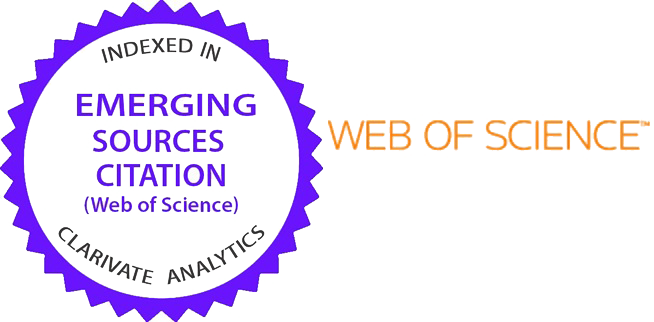Voltage-Induced Void Formation in High-Temperature Oxide Scales of Boiler Tubes
DOI:
https://doi.org/10.31436/iiumej.v26i2.3577Keywords:
high temperature oxidation, t91 alloy, void formation, induced voltageAbstract
Corrosion monitoring remains a significant challenge at high temperatures. Understanding the varying factors in high-temperature cathodic protection is crucial for developing mitigation strategies and predictive maintenance. This study assesses how cathodic protection influences oxidation in T91 alloys at elevated temperatures by evaluating the effects of exposure duration and voltage-induced void development in the oxide layer. It is hypothesized that polarizing the sample affects the diffusivity of cations and anions in the oxide scale, which is the rate-determining step of the oxidation process. This study measured the number of voids directly on T91 alloys exposed at 823K under various induced voltages. T91 alloy was externally induced with voltages of 0V, 50V, and 300V for 43.2 ks, 259.2 ks, and 432 ks at 923 K in air ( = 0.21 atm = 2.1×104 Pa). The presence of oxide layers was analysed using X-Ray Diffraction (XRD), and the void formed was inspected using Scanning Electron Microscopy (SEM). XRD results reveal that Fe2O3, Fe3O4, FeCr2O3, and Cr2O3 peaks were formed on all samples. The parabolic rate constant, Kp, was calculated as 3.83 × 10-14 m2/s, 2.17 × 10-14 m2/s, and 9.25 × 10-14 m2/s, respectively, verifying that the reaction occurred by solid-state diffusion. Changes in Kp at different induced voltages are clear evidence that the diffusivity was altered by external electrical potential. It was observed that the overall void formation decreased by 17%. Inducing voltage onto T91 alloy affects the ionic diffusivity. It changes the void formation, suggesting it may promote the diffusivity of more inert species, such as Cr, to form a protective layer at the early oxidation stage.
ABSTRAK: Pemantauan hakisan kekal sebagai cabaran utama pada suhu tinggi. Memahami pelbagai faktor perlindungan katodik pada suhu tinggi adalah penting untuk membangunkan strategi pengurangan dan ramalan penyelenggaraan. Kajian ini menilai perlindungan katodik mempengaruhi pengoksidaan dalam aloi T91 pada suhu tinggi dengan melihat kesan tempoh pendedahan dan pembangunan rongga yang disebabkan oleh potensi elektrik luaran pada lapisan oksida. Pemolaran sampel mempengaruhi keberaliran kation dan anion dalam oksida, yang menentukan kadar dalam proses pengoksidaan. Melalui kajian ini, jumlah ruang kosong diukur secara langsung pada aloi T91 yang didedahkan pada suhu 823K di bawah pelbagai voltan teraruh. Aloi T91 dikenakan voltan luaran sebanyak 0V, 50V, dan 300V bagi tempoh 43.2 ks, 259.2 ks, dan 432 ks pada suhu 923K dalam udara ( = 0.21 atm = 2.1 × 104 Pa). Kehadiran lapisan oksida dianalisa menggunakan Pembelauan Sinar-X (XRD), dan ruang kosong yang terbentuk diperiksa menggunakan Mikroskop Elektron Imbasan (SEM). Dapatan XRD menunjukkan bahawa puncak Fe2O3, Fe3O4, FeCr2O3, dan Cr?O? terbentuk pada semua sampel. Pemalar kadar parabola, Kp, dikira masing-masing sebanyak 3.83 × 10-14 m²/s, 2.17 × 10-14 m²/s, dan 9.25 × 10-14 m²/s, mengesahkan bahawa tindak balas yang berlaku adalah penyebaran keadaan pepejal. Perubahan dalam Kp pada voltan teraruh berbeza membuktikan bahawa keberaliran telah diubah oleh potensi elektrik luaran. Hasil kajian mendapati bahawa pembentukan ruang kosong secara keseluruhan berkurangan sebanyak 17%. Proses penguraian voltan pada aloi T91 mempengaruhi keberaliran ionik dan mengubah pembentukan ruang kosong, mencadangkan bahawa ia mungkin digunakan bagi mempromosi keberaliran spesies yang lebih lengai seperti Cr bagi membentuk lapisan pelindung pada peringkat awal pengoksidaan.
Downloads
Metrics
References
S. G. Subraveti, S. Roussanaly, R. Anantharaman, L. Riboldi, and A. Rajendran, “Techno-economic assessment of optimised vacuum swing adsorption for post-combustion CO2 capture from steam-methane reformer flue gas,” Sep Purif Technol, vol. 256, Feb. 2021, doi: 10.1016/j.seppur.2020.117832.
Y. Li, J. Du, L. Li, K. Gao, X. Pang, and A. A. Volinsky, “Mechanical properties and phases evolution in T91 steel during long-term high-temperature exposure,” Eng. Failure Analysis, vol. 111, Apr. 2020, doi: 10.1016/j.engfailanal.2020.104451.
T. Maruyama, M. Ueda, and K. Kawamura, “Void formation in the growing scale induced by the divergence of the diffusive ionic flux in high temperature oxidation of metals,” Defect Diffus. Forum, Trans Tech Publications Ltd, 2009, pp. 1–13. doi: 10.4028/www.scientific.net/DDF.289-292.1.
T. Maruyama, K. Akiba, M. Ueda, and K. Kawamura, “Void formation in growing oxide scales with Schottky defects and p-type conduction,” Mater. Sci. Forum, vol. 595–598, pp. 1039–1046, 2008, doi: 10.4028/www.scientific.net/MSF.595-598.1039.
R. Schlögl and F. Helfferich, “Comment on the significance of diffusion potentials in ion exchange kinetics,” J Chem. Phys., vol. 26, no. 1, pp. 5–7, 1957, doi: 10.1063/1.1743264.
Y. Jin, Y. Zhang, and Y. Liu, “Corrosion reaction kinetics and high?temperature corrosion testing of contact element strips in ultra?high voltage bushing based on the phase?field method,” IET Gener. Transm. Distrib., vol. 16, no. 2, pp. 249–260, 2022, doi: 10.1049/gtd2.12487.
A. Kaderi, A. Zaki, M. Zainal, H. Ani, and R. Othman, “Observation on Void Formed in Oxide Scale of Fe-Cr-Ni Alloy at 1073K in Dry and Humid Environments,” IIUM Eng. J., vol. 12, no. 5, pp. 69–78, 2011, doi: 10.31436/iiumej.v12i5.235.
M. H. B. Ani, T. Kodama, M. Ueda, K. Kawamura, and T. Maruyama, "The effect of water vapor on high temperature oxidation of Fe-Cr alloys at 1073 K," Mater. Trans., vol. 50, no. 11, pp. 2656–2663, 2009, doi: 10.2320/matertrans.M2009212.
S. Nasrazadani and A. Raman, "The application of infrared spectroscopy to the study of rust systems—II. Study of cation deficiency in magnetite (Fe?O?) produced during its transformation to maghemite (?-Fe?O?) and hematite (?-Fe?O?)," Corrosion Sci., vol. 34, no. 8, pp. 1355–1365, 1993, doi: 10.1016/0010-938X(93)90092-U.
T. Simmonds and P. C. Hayes, “Isothermal Oxidation of Magnetite to Hematite in Air and Cyclic Reduction/Oxidation Under Carbon Looping Combustion Conditions,” Metall. Mater. Trans. E, vol. 4, no. 2–4, pp. 114–122, Dec. 2017, doi: 10.1007/s40553-017-0111-7.
M. Ueda, K. Kawamura, and T. Maruyama, "Void formation in magnetite scale formed on iron at 823 K—Elucidation by chemical potential distribution," Mater. Sci. Forum, vol. 523, pp. 37–44, 2006, doi: 10.4028/www.scientific.net/MSF.522-523.37.
S. Taniguchi, “Stresses developed during the oxidation of metals and alloys,” Trans. Iron Steel Inst. Jpn., vol. 25, pp. 3–13, 1985, doi: 10.2355/isijinternational1966.25.3.
A. Fluri, D. Pergolesi, V. Roddatis, A. Wokaun, and T. Lippert, "In situ stress observation in oxide films and how tensile stress influences oxygen ion conduction," Nat. Commun., vol. 7, no. 1, p. 10692, 2016, doi: 10.1038/ncomms10692.
R. D. Armstrong, “Electrochemical Dissolution,” Encyclopedia of Materials: Science and Technology. Elsevier, pp. 2521–2525, 2001. doi: 10.1016/B0-08-043152-6/00456-3.
T. Jonsson (2007) Microscopy of High Temperature Oxidation of Iron and Some Stainless Steels PhD thesis. Chalmers University of Technology. Retrieved from https://research.chalmers.se/en/publication/40412.
R. Arras, B. Warot-Fonrose, and L. Calmels, “Electronic structure near cationic defects in magnetite,” J. Phys. Condens. Matter, vol. 25, no. 25, Jun. 2013, doi: 10.1088/0953-8984/25/25/256002.
K. R. Tolod, S. Hernández, E. A. Quadrelli, and N. Russo, “Visible light-driven catalysts for water oxidation: Towards solar fuel biorefineries,” in Studies in Surface Science and Catalysis, vol. 178, S. Albonetti, S. Perathoner, and E. A. Quadrelli, Eds., Elsevier, 2019, pp. 65–84, doi: 10.1016/B978-0-444-64127-4.00004-5.
A. Rado? et al., “Influence of magnetite nanoparticles shape and spontaneous surface oxidation on the electron transport mechanism,” Materials, vol. 14, no. 18, Sep. 2021, doi: 10.3390/ma14185241.
D. Varshney and A. Yogi, “Structural and Electrical conductivity of Mn doped Hematite (?-Fe2O3) phase,” J. Mol. Struct, vol. 995, no. 1–3, pp. 157–162, May 2011, doi: 10.1016/j.molstruc.2011.04.011.
J. Engel and H. L. Tuller, “The electrical conductivity of thin film donor doped hematite: From insulator to semiconductor by defect modulation,” Phys. Chem. Chem. Phys., vol. 16, no. 23, pp. 11374–11380, Jun. 2014, doi: 10.1039/c4cp01144a.
K. Akiba, M. Ueda, K. Kawamura, and T. Maruyama, “Quantitative prediction of voids formation in a growing nickel oxide scale at 1371 K,” Mater. Trans., vol. 48, pp. 2753–2761, Oct. 2007, doi: 10.2320/matertrans.MER2007122.
Downloads
Published
How to Cite
Issue
Section
License
Copyright (c) 2025 IIUM Press

This work is licensed under a Creative Commons Attribution-NonCommercial 4.0 International License.






















